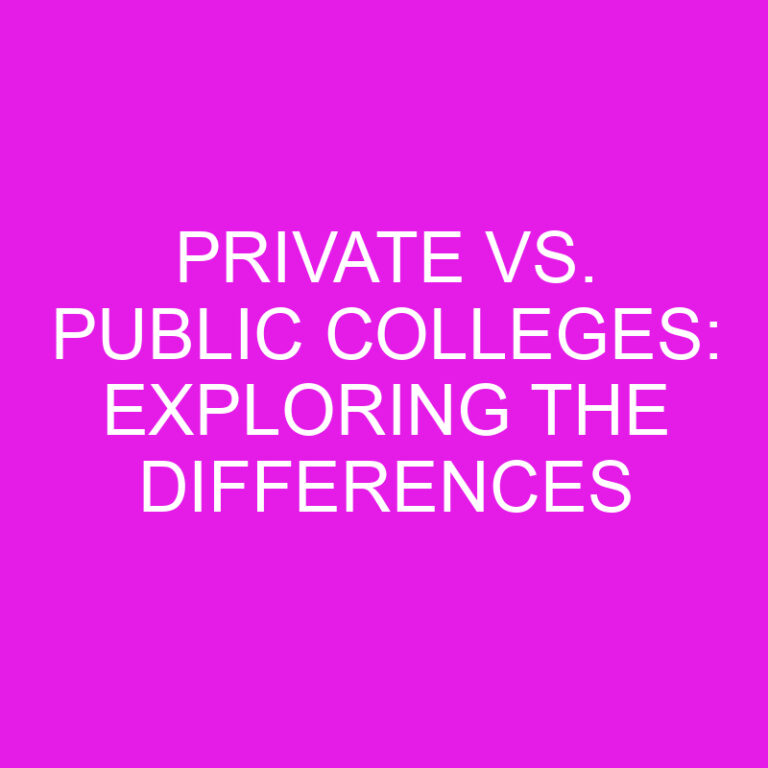
When it comes to the world of performing arts, two genres that often get intertwined are musicals and operas. While both involve singing, dancing, and storytelling, there are distinct differences between the two. In this article, I’ll delve into the contrasting characteristics of musicals and operas, shedding light on what sets them apart.
Musicals, with their catchy tunes and lively choreography, have become a beloved form of entertainment around the globe. These theatrical productions combine spoken dialogue, songs, and dance numbers to tell a captivating story. In a musical, the emphasis is on the narrative, with the music and dance serving as supporting elements that enhance the overall experience.
On the other hand, operas are a grand and majestic art form that dates back centuries. Rooted in classical music, operas are known for their soaring arias and powerful orchestral accompaniment. The primary focus of an opera is the music itself, with the storyline and characters playing a secondary role. Operas often feature elaborate sets, costumes, and larger-than-life performances that transport audiences to different eras and worlds.
In the following paragraphs, I’ll explore the key differences in terms of storytelling, music, and performance style between musicals and operas. So, let’s dive in and unravel the unique aspects of these two captivating forms of live entertainment.
Post Contents
- Key Takeaways
- Storytelling in Musicals and Operas
- Musical Characteristics and Features
- Operatic Music and its Characteristics
- Performance Style in Musicals and Operas
- Conclusion
- Frequently Asked Questions
- Q: What is the difference between a musical and an opera?
- Q: What role does music play in musicals?
- Q: What defines the performance style in musicals?
- Q: How is operatic music different from other types of music?
- Q: What role does the libretto play in opera?
- Q: How are costumes and set design important in musicals and operas?
Key Takeaways
- Musicals and operas are two distinct genres of performing arts, with key differences in storytelling, music, and performance style.
- In musicals, storytelling takes center stage, driven by dialogue, songs, and dance routines. The music and dance serve as supporting elements to enhance the emotions and convey the plot.
- Operas primarily focus on the music itself, with the storyline playing a secondary role. The music is grand and majestic, rooted in classical compositions, and emotions and story are conveyed through powerful vocal performances and orchestral accompaniments.
- Musicals are a delightful combination of storytelling, music, dance, and visual elements. They emphasize variety in musical styles and genres, have intricate choreography, and create visually stunning experiences through set design, costumes, and lighting.
- Operatic music is characterized by dramatic expression, emotional intensity, complex melodies, powerful vocal performances, large orchestras, extended musical forms, and textual importance.
- In musicals, performance style involves seamless integration of acting, singing, and dancing. Actors convey emotions and motivations through facial expressions, body language, and dialogue, while singers and dancers bring the story to life through powerful vocals and choreographed movements.
- In opera, the emphasis is on operatic singing, with exceptional vocal abilities showcased. Operas are accompanied by large orchestras, and the libretto holds great significance, providing structure for the music and vocal performances.
Storytelling in Musicals and Operas
When it comes to storytelling, both musicals and operas have their unique approaches that captivate audiences. Let’s take a closer look at how storytelling is presented in these two forms of live entertainment.
Musicals:
In musicals, storytelling is at the forefront. The narrative is driven by the characters’ dialogue, songs, and dance routines. Through catchy tunes and lively choreography, musicals engage the audience and bring the story to life. The music and dance serve as supporting elements, enhancing the emotions and conveying the plot.
Musical composers and lyricists work hand in hand to create songs that seamlessly blend with the storyline. These songs often reveal character motivations, express emotions, and advance the plot. The lyrics are carefully crafted to convey the characters’ thoughts and feelings, providing insight into their journey.
The set design, costumes, and lighting in musicals also contribute to the storytelling. They create the atmosphere and help transport the audience into the world of the story, whether it’s a colorful and vibrant Broadway production or an intimate off-Broadway performance.
Operas:
In operas, the focus is primarily on the music itself, with the storyline playing a secondary role. The music in operas is grand and majestic, rooted in classical compositions. The libretto, or the opera’s text, is written to complement the music and is often sung in a foreign language, adding to the sense of artistry and sophistication.
The emotions and story are conveyed through the powerful and expressive vocal performances of the opera singers. The music takes center stage, evoking a range of emotions from the audience, without relying heavily on dialogue or choreographed dance routines. The orchestra, led by the conductor, provides the dramatic and melodic backdrop that intensifies the storytelling experience.
Opera productions typically feature elaborate sets and costumes that further enhance the visual aspect of the storytelling. From opulent opera houses to intimate stages, the visuals in opera serve to transport the audience into different time periods and fantastical worlds.
Musical Characteristics and Features
In my years of experience as a blogger and theater enthusiast, I have come to appreciate the unique characteristics and features of musicals. Musicals are a delightful combination of storytelling, music, and dance, with each element playing a crucial role in creating a memorable theatrical experience.
One of the defining features of musicals is the emphasis on storytelling. The narrative is driven by dialogue, songs, and dance routines, allowing for a dynamic and engaging plot. The songs in musicals serve as a means of expressing emotions, advancing the storyline, and revealing the thoughts and motivations of the characters.
Another aspect that sets musicals apart is the variety of musical styles and genres incorporated into the production. From catchy show tunes to ballads that tug at your heartstrings, there is a diverse range of musical styles that can be found in a musical. This eclectic mix of music adds depth and variety to the overall experience.
In addition to the music, the choreography in musicals adds another layer of excitement and energy. Dance routines are carefully crafted to enhance the storytelling, often expressing emotions and advancing the plot through movement. The coordination between the music, lyrics, and dance creates visually stunning and emotionally powerful moments on stage.
The visual aspect of musicals is also crucial in creating a captivating experience for the audience. Set design, costumes, and lighting are meticulously planned and executed to transport the viewers into the world of the story. From elaborate backdrops and immersive sets to dazzling costumes that bring the characters to life, every visual element adds to the overall storytelling.
Musicals are not just about the songs and dance numbers; they are a complete theatrical experience that engages the senses and touches the heart. The seamless integration of storytelling, music, dance, and visual elements make musicals a unique and beloved form of entertainment.
So, if you find yourself humming a show tune or tapping your feet to a catchy melody, you might just be under the spell of the magic that is musical theater.
Operatic Music and its Characteristics
Operatic music is a fundamental element of opera that sets it apart from musicals. It features distinct characteristics that make it unique and captivating.
1. Dramatic Expression and Emotional Intensity: Operatic music is known for its ability to convey deep emotions and dramatic expressions. It has the power to evoke strong feelings within the audience, making them feel connected to the story and characters.
2. Complex Melodies and Ornamentation: Operatic music is characterized by complex melodies and intricate ornamentation. These musical elements add depth and complexity to the compositions, creating a rich and enchanting musical experience.
3. Powerful Vocal Performances: One of the standout features of opera is the emphasis on the human voice. Opera singers are renowned for their exceptional vocal abilities, capable of reaching incredible ranges and projecting their voices with power and precision.
4. Large Orchestras: Operas are typically accompanied by large orchestras, adding richness and grandeur to the music. The orchestral arrangements in opera often include a wide range of instruments, creating a symphony of sound that envelops the entire performance.
5. Extended Musical Forms: Operatic music often follows extended musical forms, such as arias, recitatives, and choruses. These different forms allow for a variety of musical styles and structures within a single opera, adding depth and variety to the overall musical experience.
6. Textual Importance: In opera, the text or libretto is of great importance. The music serves to enhance and bring to life the words, creating a cohesive storytelling experience. The lyrics are carefully crafted to convey the emotions, thoughts, and motivations of the characters.
Operatic music is a powerful form of artistic expression that combines music, storytelling, and vocal prowess to create a truly captivating theatrical experience. Its unique characteristics and emotional intensity make opera a beloved art form that continues to engage and inspire audiences around the world.
Performance Style in Musicals and Operas
In the captivating world of musicals and operas, performance style is a crucial element that sets them apart. Let’s take a closer look at the distinctive performance styles found in these two theatrical forms.
1. Musicals:
In musicals, performance style is characterized by a seamless integration of acting, singing, and dancing. It is a harmonious fusion of multiple art forms that work together to create a unique and engaging experience for the audience.
Key Points:
- Acting: The performers in musicals are not only skilled singers and dancers but also exceptional actors. They convey the emotions and motivations of their characters through their expressive facial expressions, body language, and dialogue.
- Singing: The heart of a musical lies in its music, and the singers play a pivotal role in bringing the story to life. Through their powerful vocals, they convey a wide range of emotions, advance the storyline, and provide insight into the characters’ innermost thoughts.
- Dancing: Choreography in musicals enhances the storytelling, adding another layer of emotion and energy. The dancers’ movements and routines contribute to the narrative, portraying emotions, relationships, and plot developments.
- Ensemble Performances: Musicals often feature ensemble numbers, where a group of performers come together to create captivating and visually stunning routines. These moments showcase the synchronized talent and harmony of the entire cast.
2. Operas:
Opera, on the other hand, emphasizes the art of operatic singing. It is a grandiose form of musical theater that showcases the power and range of operatic voices, accompanied by a symphony orchestra.
- Vocal Prowess: Opera singers are renowned for their exceptional vocal abilities. They undergo rigorous training to master the techniques required to project their voices without amplification, filling theaters with rich and resonant sounds.
- Orchestration: Operas are typically accompanied by a large orchestra, creating a symphony of sound that envelops the audience in a wave of musical splendor. The orchestration adds depth, richness, and complexity to the compositions.
- Libretto: In opera, the text or libretto holds great significance. The music serves to enhance and bring the words to life, with the singers delivering their lines in melodic and dramatic form. The libretto provides the structure upon which the music and vocal performances rely.
Conclusion
Musicals and operas are two distinct forms of theatrical performance that offer unique experiences to audiences. Musicals focus on storytelling, combining elements of dialogue, songs, and dance routines to convey emotions and advance the plot. The visual aspects, such as set design, costumes, and lighting, also contribute to the overall storytelling in musicals. On the other hand, operas place a strong emphasis on operatic singing, with exceptional vocal abilities and rigorous training required from the singers. Operas are accompanied by large orchestras, creating a symphony of sound that adds depth and complexity to the compositions. The libretto holds great significance in opera, providing the structure upon which the music and vocal performances rely.
Both musicals and operas have their own unique characteristics and features that make them captivating and memorable. Whether it’s the seamless integration of acting, singing, and dancing in musicals or the powerful vocal performances and symphony of sound in operas, both forms of performance art offer a rich and immersive experience for audiences. So, whether you prefer the catchy tunes and energetic choreography of musicals or the emotional depth and dramatic expressions of operas, there is something for everyone to enjoy in the world of musical theater and opera.
Frequently Asked Questions
Q: What is the difference between a musical and an opera?
A: Musicals are characterized by a strong emphasis on storytelling through dialogue, songs, and dance routines. They incorporate various elements like music, dance, set design, costumes, and lighting to enhance the storytelling experience. Operas, on the other hand, focus on operatic singing and express deep emotions through complex melodies and intricate ornamentation. They often follow extended musical forms and rely on a libretto to bring the story to life.
Q: What role does music play in musicals?
A: In musicals, music serves as a key element in expressing emotions, advancing the storyline, and revealing the thoughts and motivations of the characters. It adds depth and variety to the overall experience, incorporating a variety of musical styles and genres. Music in musicals is integrated with dialogue and dance to create a memorable theatrical experience.
Q: What defines the performance style in musicals?
A: The performance style in musicals is characterized by the seamless integration of acting, singing, and dancing. Performers in musicals are skilled in all three areas, conveying emotions and motivations through expressive facial expressions, body language, and dialogue. The heart of a musical lies in its music, and the singers play a key role in bringing the story to life. Choreography enhances the storytelling, and ensemble numbers showcase the synchronized talent and harmony of the cast.
Q: How is operatic music different from other types of music?
A: Operatic music is known for its ability to convey deep emotions and dramatic expressions. It features complex melodies and intricate ornamentation, adding depth and complexity to the compositions. Opera singers are renowned for their exceptional vocal abilities, which they master through rigorous training. Operatic music often follows extended musical forms, allowing for a variety of musical styles and structures within a single opera.
Q: What role does the libretto play in opera?
A: The libretto holds great significance in opera, as it provides the structure upon which the music and vocal performances rely. The music serves to enhance and bring the words of the libretto to life. The libretto guides the storytelling and allows for the expression of emotions and motivations through the powerful combination of music and words.
Q: How are costumes and set design important in musicals and operas?
A: In musicals, costumes and set design contribute to the overall storytelling experience, creating a captivating visual aspect. They help set the scene, define the characters, and enhance the atmosphere of the story. In operas, costumes and set design also play a crucial role in bringing the story to life, ensuring the visual representation aligns with the narrative and adds to the overall theatrical experience. Both in musicals and operas, costumes and sets are an integral part of creating a memorable and immersive performance.






